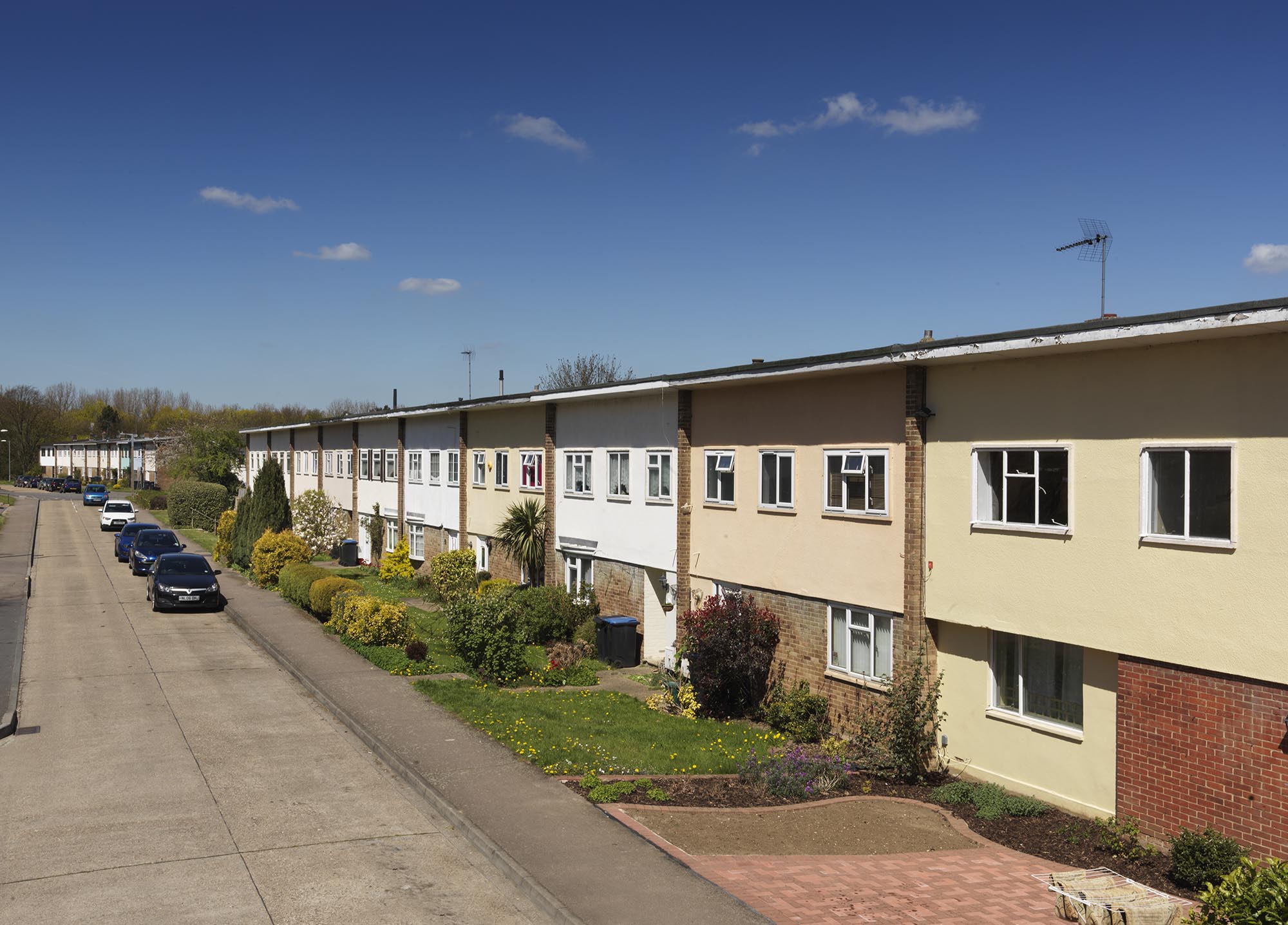Post-War Impact
Judith Ledeboer (1901-1990), who had been assistant architect to Elizabeth Scott and, at Stratford, was the Secretary of the 1944 Dudley Committee on post-war council housing. Consisting of 12 men and 8 women, it recommended that local authorities needed to engage and consult more women on their housing committees.
Ledeboer worked on the housing for the elderly and open spaces area of the Lansbury Estate, Poplar as part of the 1951 Festival of Britain 'Living' architecture exhibit.
Whilst the housing integrated features to assist people's mobility, the open spaces were designed to facilitate walks through trees and grass and provide play areas for children.
In the post-war New Town of Hemel Hempstead, Ledeboer designed one of the six neighbourhoods known as Bennetts End (1950-1955).
During the Second World War Jane Drew (1911-1996) had her own practice employing women. Known as a Modernist, she worked on the 1943 'Rebuilding Britain' exhibition at the National Gallery, London and the 'Britain Can Make It' exhibition in 1946 at the Victoria and Albert Museum.
From 1949 she was also involved in Harlow New Town, Essex where she designed the Chantry and Tanys Dell Estates of three and four-bedroom terrace houses with her husband Maxwell Fry.
They also worked together on the Passfield Flats, Lewisham, south east London in 1950 and again in 1953 on the Whitefoot Lane Flats on Lewisham's Downham Estate.
Using innovative low-cost building materials often with controversial results was Brutalist architect, Alison Smithson (1928-1993). She worked in a democratic, collaborative partnership with her architect husband, Peter Smithson.
Their House of the Future, for the 1956 Daily Mail Ideal Home Exhibition displayed some features now more familiar in current housing.
Made of plastic-impregnated plaster for mass-production and economy, with moulded plastic furniture, it contained electrical remote controls, cylindrical shower with air-drying jets, retractable bed, built-in furniture, a self-cleaning bath, and under-floor heating.





